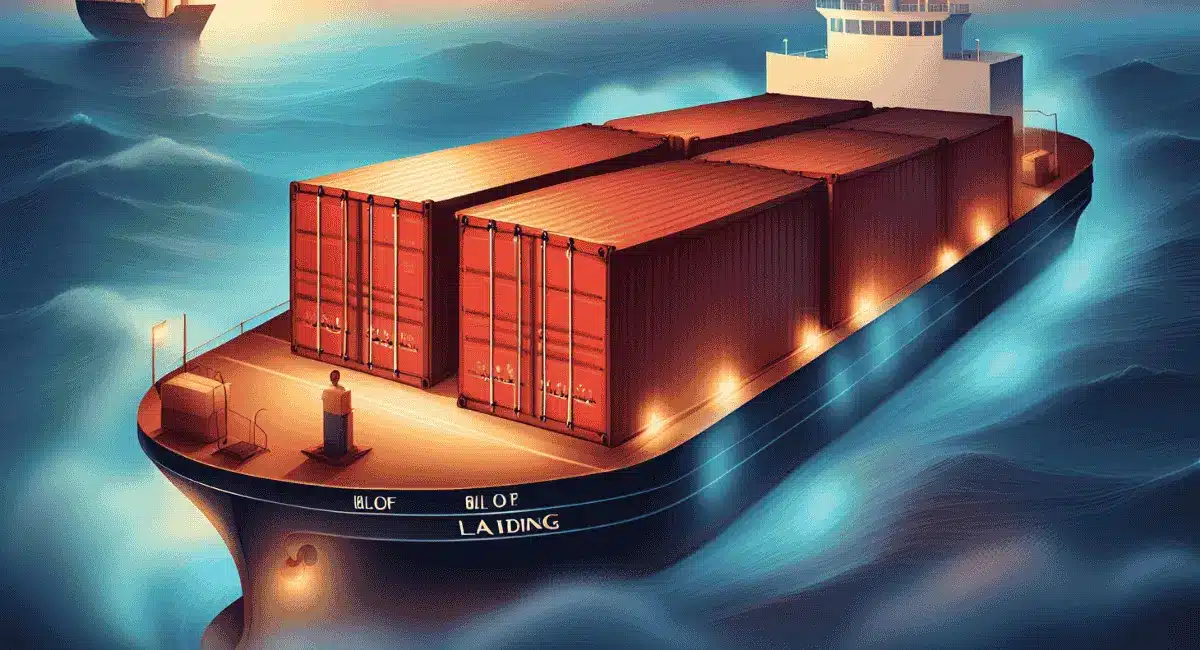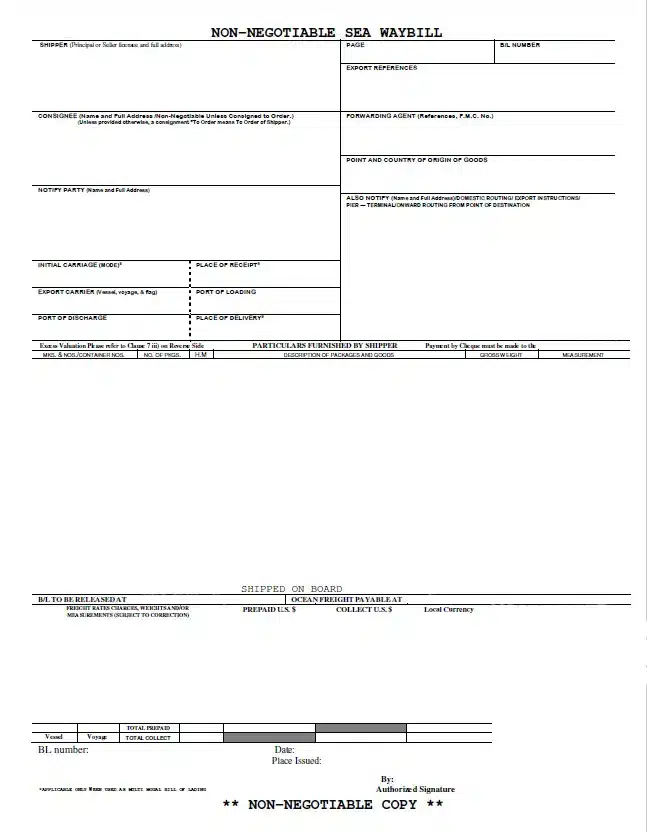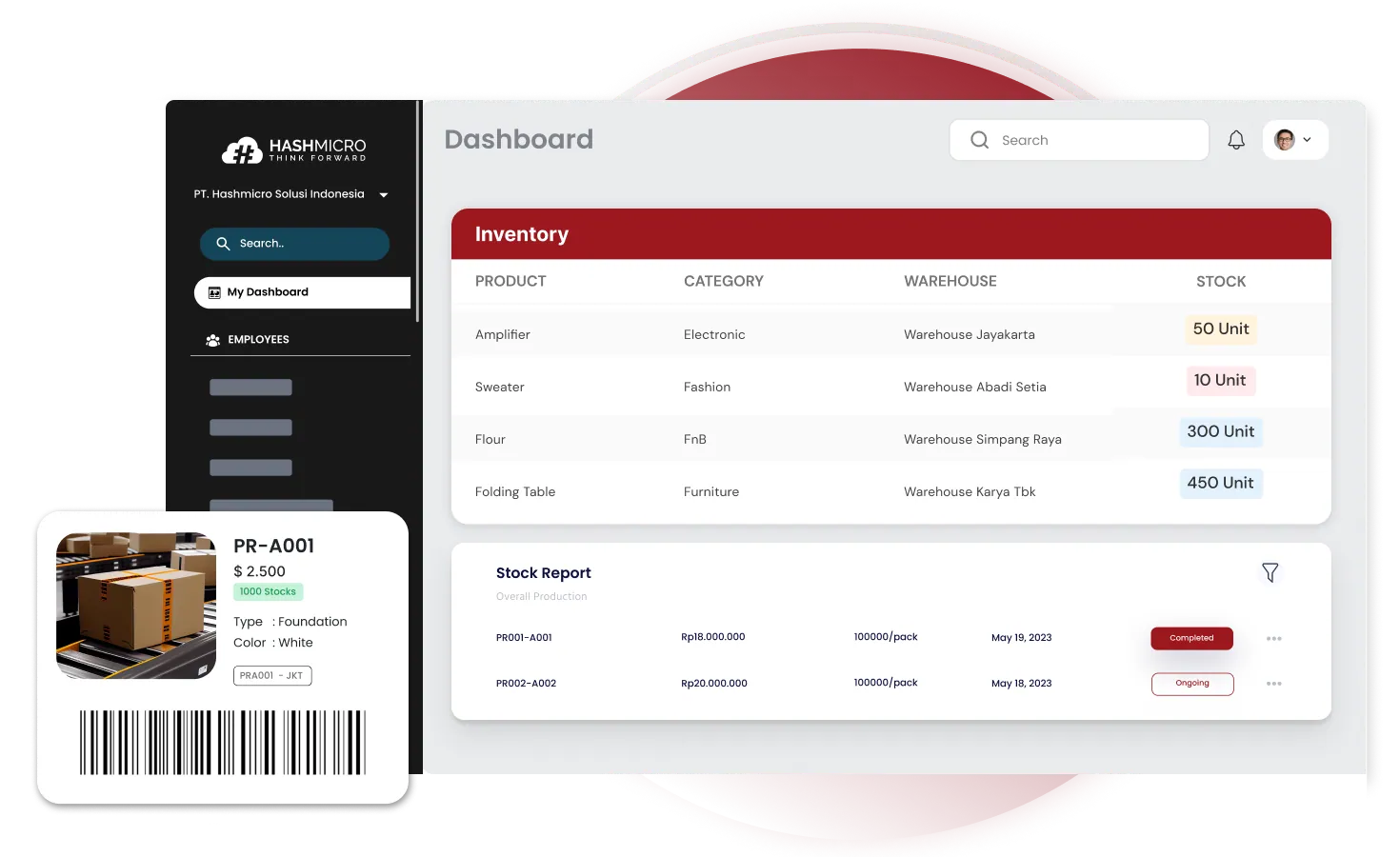Imagine losing ownership of your cargo mid-shipment—sounds impossible, right? Yet, this could be your reality without a Bill of Lading (BoL). Whether you’re a shipper or receiver, this document determines who controls the goods. But that’s just the tip of the iceberg.
This document secures ownership and ensures smooth shipping operations and legal compliance. It acts as more than just proof of ownership—the contract underpins every shipping transaction, ensuring smooth operations, legal compliance, and protection for all parties involved.
No BoL means no goods, no guarantee, and no business. Want to know how this simple yet powerful document keeps global trade from falling apart? Dive deeper as we explore the different types, key components, and operational secrets of the BoL that make it essential for any shipment.
Key Takeaways
|
Table of Contents
What is a Bill of Lading?

A Bill of Lading is more than just a shipping document; it’s essential in global trade. This legal agreement outlines the type, quantity, and destination of goods between the shipper and the carrier. It confirms that the goods have been received in acceptable condition and will be delivered as agreed upon.
Each party involved—shipper, carrier, or consignee—has clear rights and responsibilities during shipment. In the Philippines, international trade relies heavily on the BoL to ensure smooth operations.
The document is crucial for complying with the country’s legal and customs regulations. Without it, businesses face delays, fines, or disputes, disrupting cross-border transactions. The BoL ensures goods move efficiently through the global supply chain.
Types of Bills of Lading
Understanding the different types of Bills of Lading is crucial for businesses, as each serves a unique purpose. Below are some of the main categories:
1. Negotiable vs. Non-Negotiable Bills of Lading
A negotiable BoL allows the transfer of ownership of goods while in transit, making it a valuable tool for international trade. The consignee listed can endorse the BoL, enabling a third party to receive the shipment. In contrast, a non-negotiable BoL is non-transferable, with goods delivered only to the specified consignee.
2. Ocean Bill of Lading
This is the most common type of BoL used for ocean freight. It outlines the terms of shipment for goods transported via sea. Given the Philippines’ role as an island nation with vast seafaring trade, the Ocean Bill of Lading is widely used for imports and exports.
3. House Bill of Lading
Freight forwarders issue a House BoL for smaller, consolidated shipments. This BoL facilitates tracking multiple shipments within one larger consignment, a common practice in the logistics industry.
4. Electronic Bill of Lading (eBoL)
Electronic Bills of Lading (eBoLs) are becoming more common as the world approaches digital solutions. They reduce paperwork, speed up processes, and improve efficiency. However, businesses in the Philippines need to be aware of jurisdiction-specific regulations concerning eBoLs.
Familiarizing with different types of Bills of Lading helps businesses choose the right document for smooth transactions. Selecting the appropriate BoL minimizes risks and ensures compliance, optimizing logistics.

Components of a Bill of Lading
A Bill of Lading (BoL) must include essential components to ensure compliance and accurate documentation throughout the shipping process. These details are critical for avoiding any legal or logistical complications.
Key components of a BoL include:
- Names and addresses of the shipper, consignee, and carrier
- Place of loading and destination
- Description and quantity of goods
- Mode of transport (e.g., sea, air, or land)
Ensuring the accuracy of this information is vital to prevent legal disputes and avoid delays in the logistics chain.
Bill of Lading Example

Importance of a Bill of Lading in the Philippines
The Bill of Lading (BoL) plays a crucial role in ensuring smooth and efficient trade for businesses in the Philippines. It serves as a legal safeguard and an operational tool that helps manage the complexities of international shipping.
Functions of a Bill of Lading for Filipino businesses include:
- Legal Protection: Ensures compliance with international trade laws, protecting both shipper and consignee in case of disputes.
- Proof of Ownership: Confirms that the consignee or holder of the BoL is the rightful owner of the goods.
- Customs Compliance: Helps ensure compliance with local customs regulations, which is essential for importing goods into the Philippines.
- Efficient Operations: Enables businesses to track shipments, optimize logistics, and avoid unnecessary delays.
By fulfilling these essential roles, the Bill of Lading provides businesses in the Philippines with the tools they need to operate efficiently in the global market. It mitigates cross-border trade risks and enhances shipments’ transparency and traceability, strengthening their position in international commerce.
Operational Aspects of a Bill of Lading
The operational aspects of a Bill of Lading are critical for ensuring that shipments proceed smoothly from origin to destination. Understanding these operational details is essential for both shippers and consignees to prevent disruptions and ensure compliance.
Key operational steps for handling a Bill of Lading include:
- Issuance by Carrier: The carrier issues the BoL after confirming the goods are in acceptable condition for shipment.
- Verification by Consignee: Upon arrival, the consignee must present the BoL to release the shipment. This ensures that the right goods are delivered to the correct party.
- Handling Errors: Mistakes on a BoL can lead to significant delays. All parties should double-check the BoL to avoid errors affecting customs clearance.
Following these operational steps ensures that the shipment process runs smoothly and efficiently. By paying close attention to each detail, businesses can avoid costly errors, improve communication between all parties involved, and enhance the overall efficiency of their international logistics operations.
Manage Bill of Lading Using HashMicro’s Distribution Software

Managing a Bill of Lading efficiently can be challenging, but the process becomes seamless with HashMicro’s Distribution Software. This software simplifies the management of Bills of Lading and integrates other essential features that enhance overall operations.
Features of HashMicro’s Distribution Software include:
- Cash Flow Optimization: Create and send invoices easily, streamlining financial management and improving cash flow.
- Digitalization of Procurement Activities: Boost the efficiency of your procurement processes, ensuring smooth and effective resource management.
- Thorough Inventory Control: Real-time stock monitoring and tracking help businesses manage their inventory more effectively and avoid shortages or overstocking.
- Easy Report Generation: Simplify the creation of detailed reports, allowing businesses to analyze performance and make informed decisions.
Unlike other distribution software, HashMicro’s Distribution Software provides a comprehensive solution, covering everything from invoicing to inventory. By utilizing these features, businesses can manage Bills of Lading while optimizing operations for greater efficiency and smoother logistics.
Conclusion
The Bill of Lading is a vital document that ensures legal compliance and smooth logistics. Its role in protecting ownership rights, facilitating customs clearance, and optimizing operations is essential for businesses, especially in the Philippines. Without a BoL, cross-border transactions would face significant risks and delays.
By managing Bills of Lading efficiently, businesses can enhance their logistics processes and reduce potential errors. HashMicro’s Distribution Software simplifies BoL management and improves cash flow, procurement, inventory, and reporting. Schedule a free demo today to see how this software can benefit your business!

Frequently Asked Questions
-
What is the purpose of a bill of lading?
A Bill of Lading serves as a legal document confirming the receipt and shipment of goods. It ensures compliance, ownership transfer, and smooth logistics during the shipping process.
-
Who receives the bill of lading?
The shipper, carrier, and consignee each receive copies of the Bill of Lading. The consignee uses it to claim ownership of the goods upon delivery.
-
What does a bill of lading tell you?
A Bill of Lading provides details about the shipment, including the type, quantity, and destination of goods. It also lists the involved parties—shipper, consignee, and carrier—ensuring all responsibilities are clear.




































